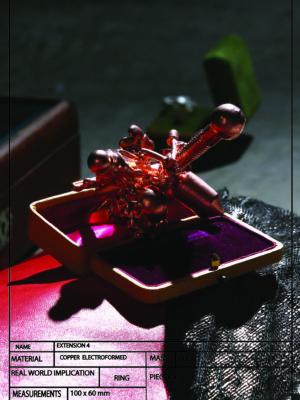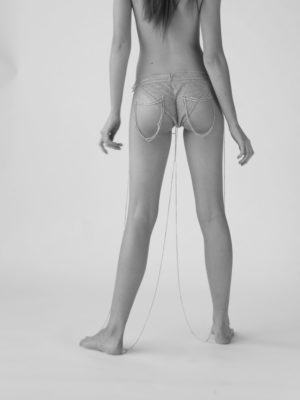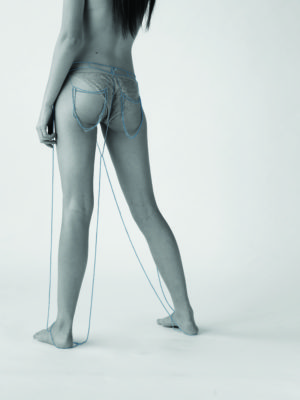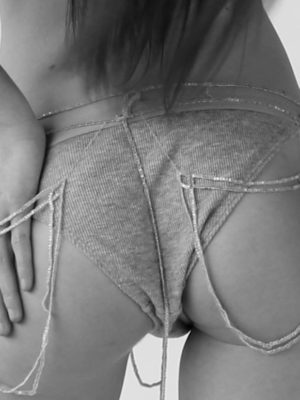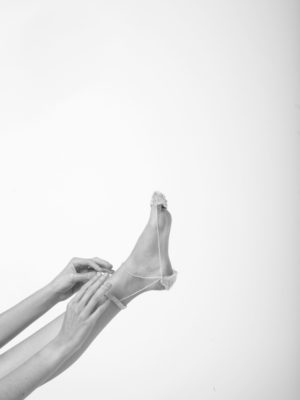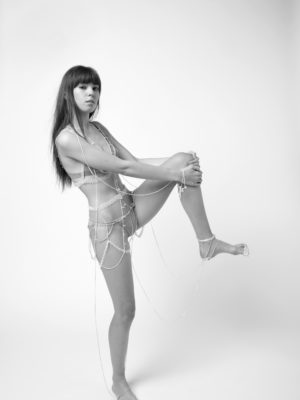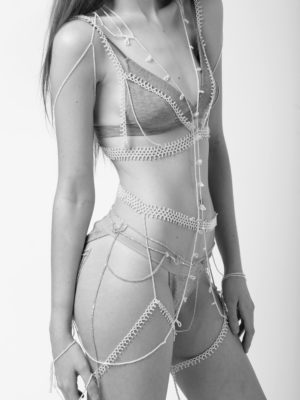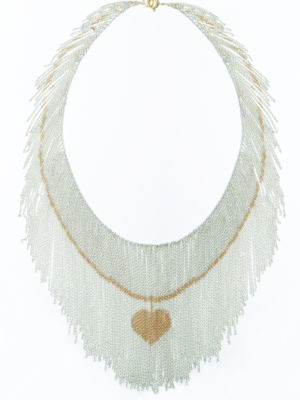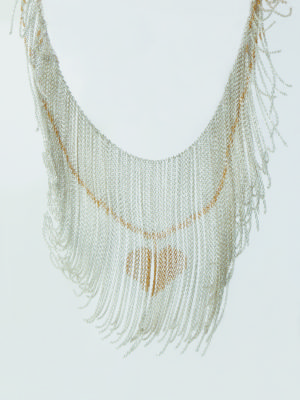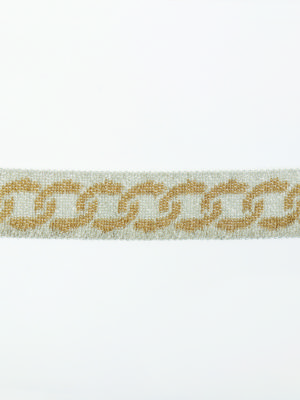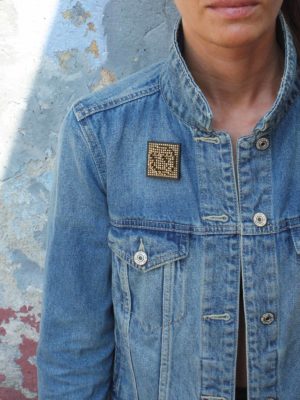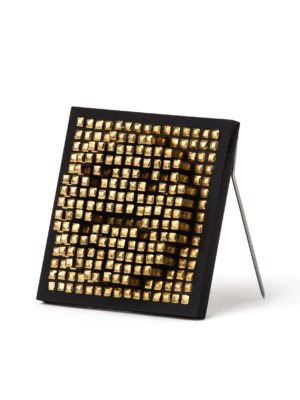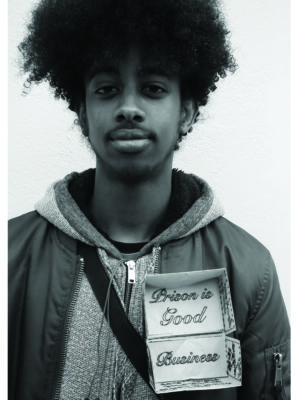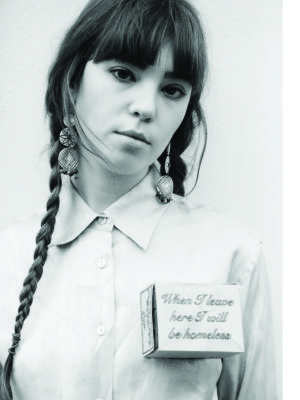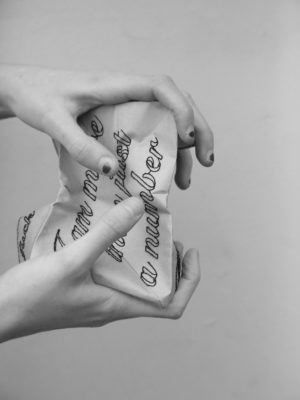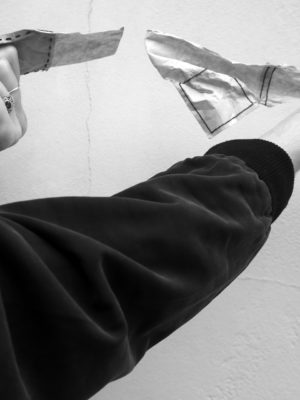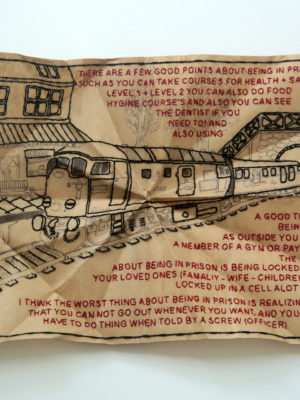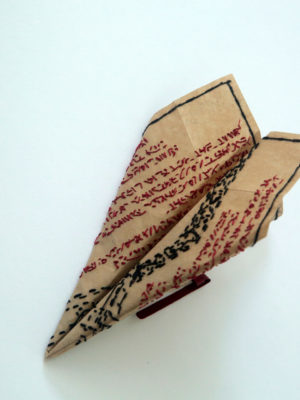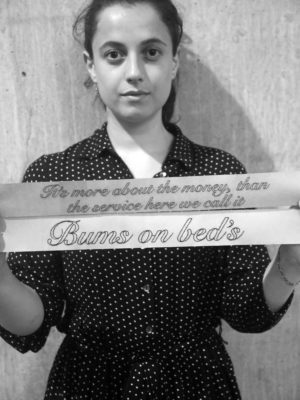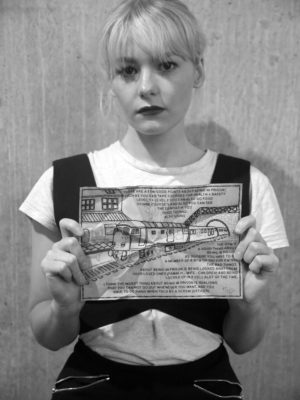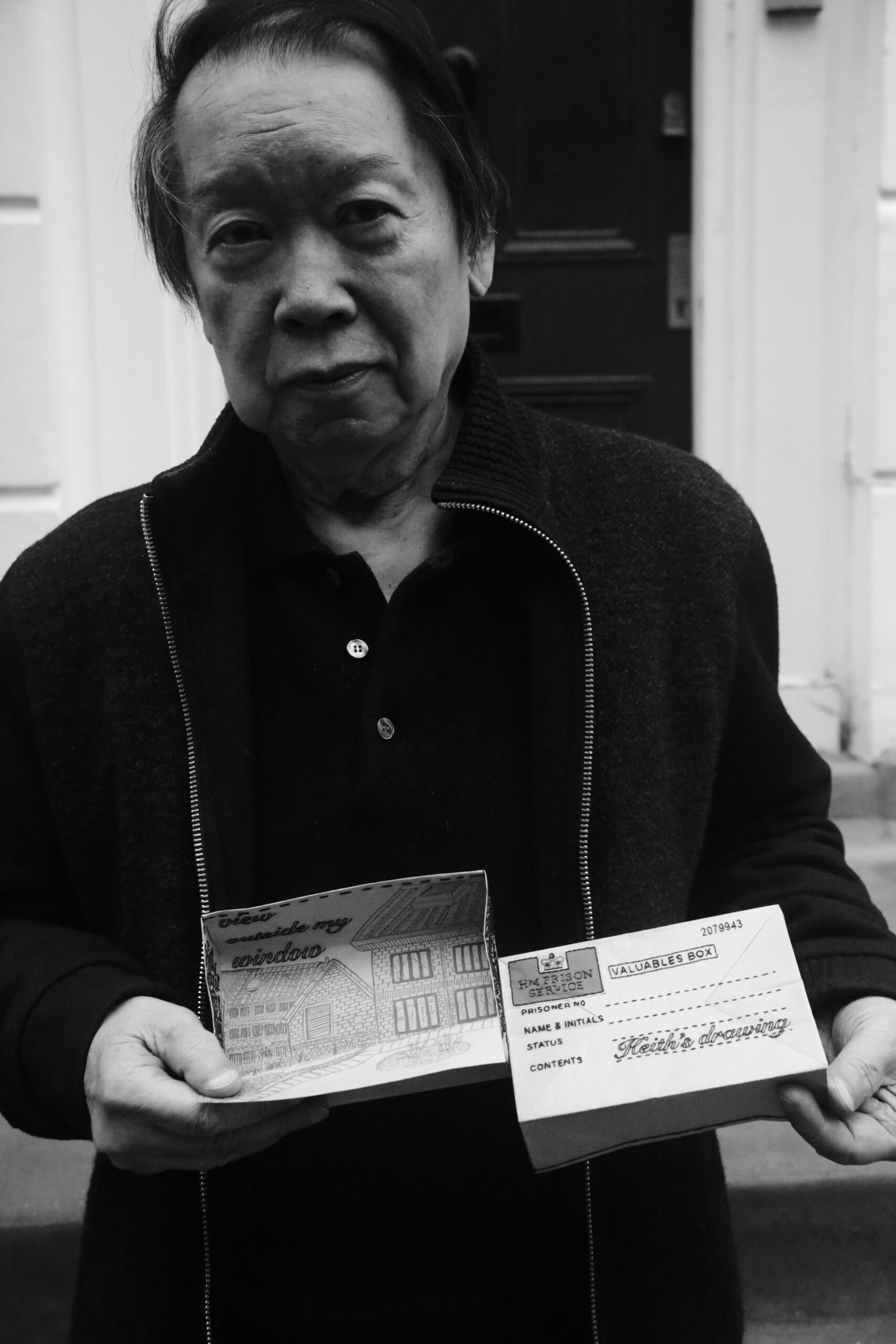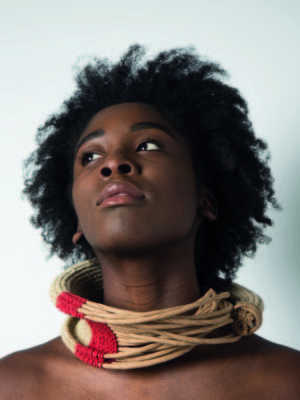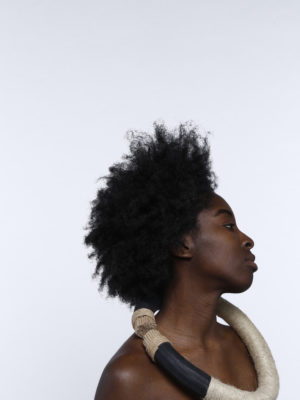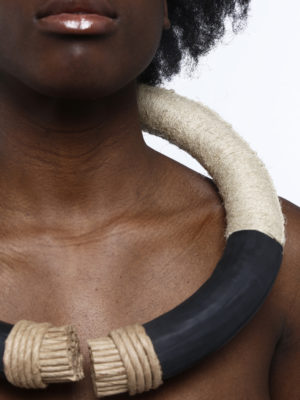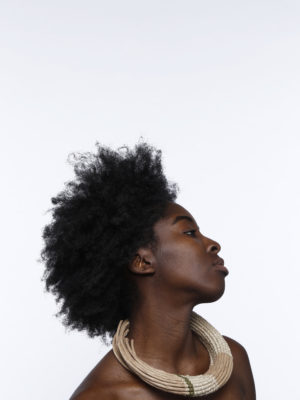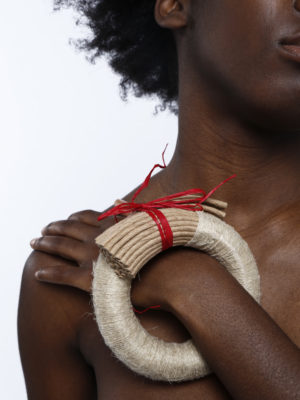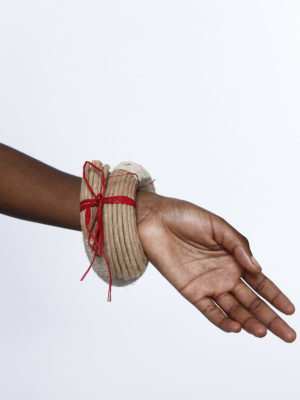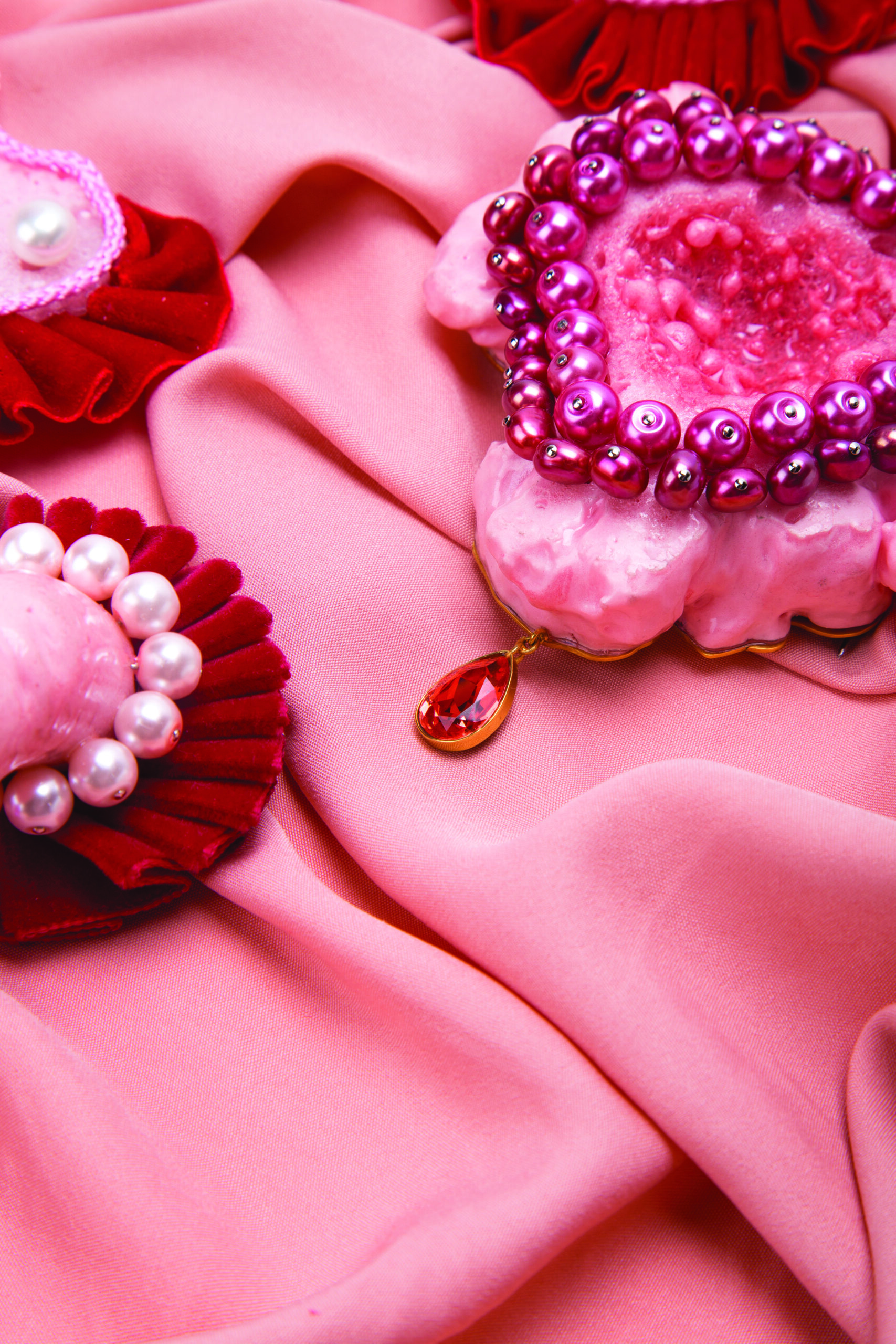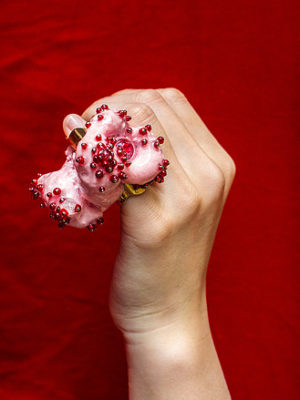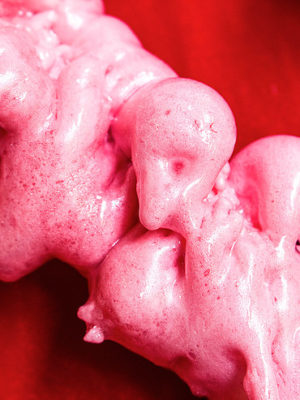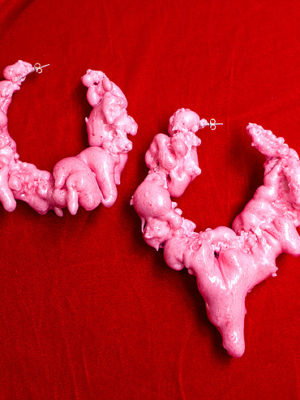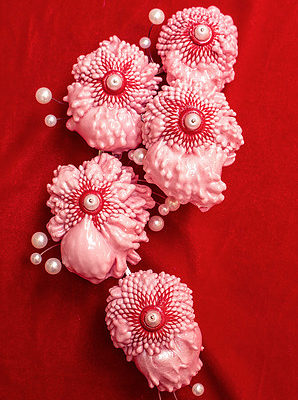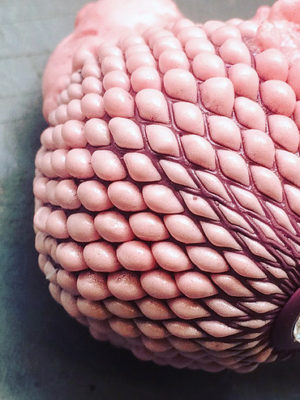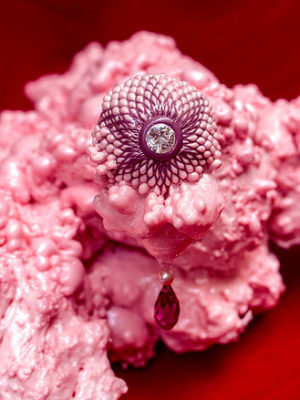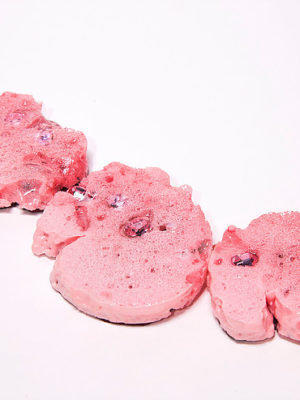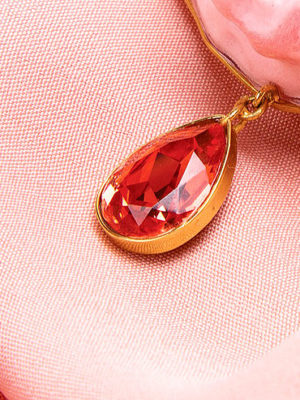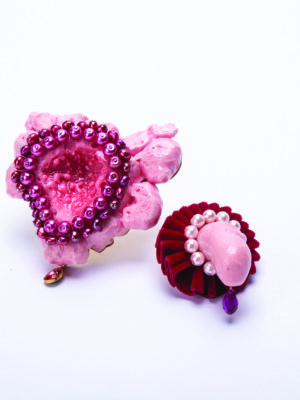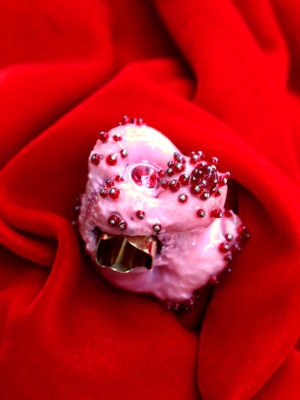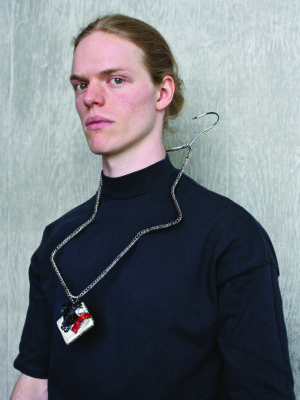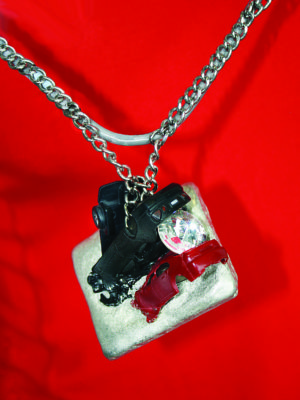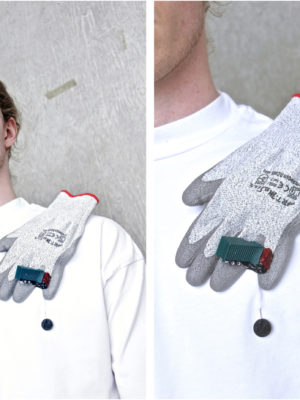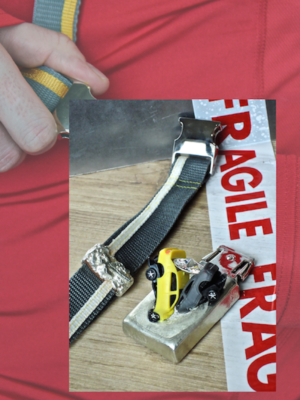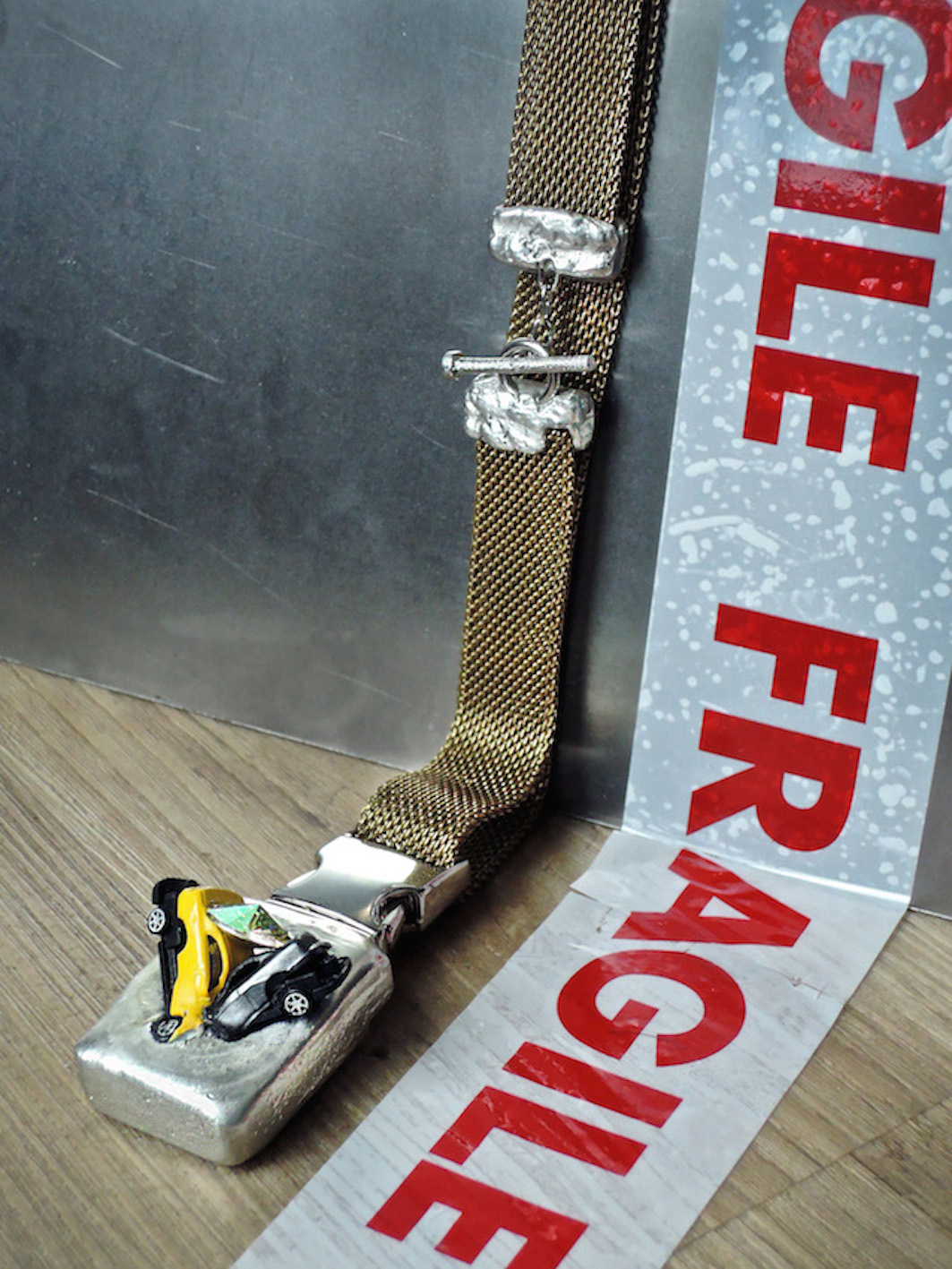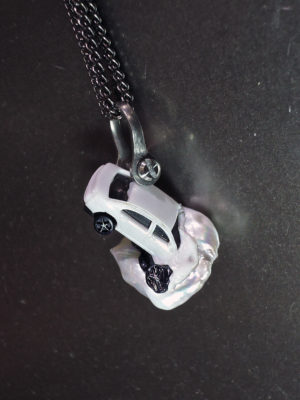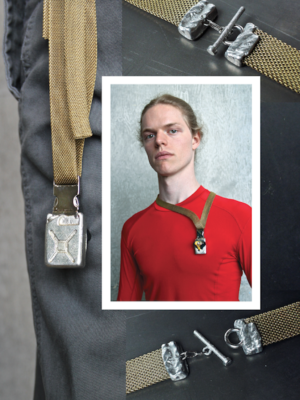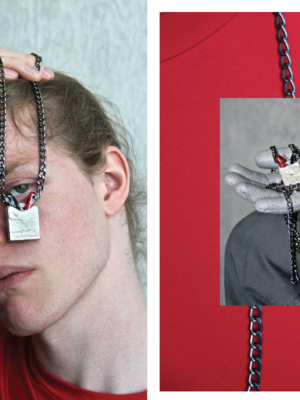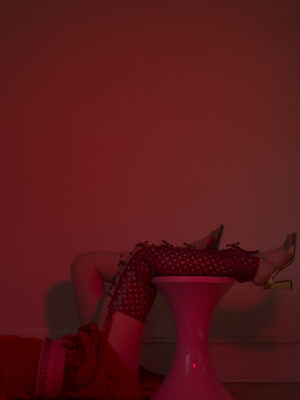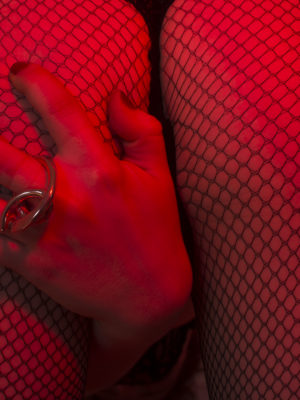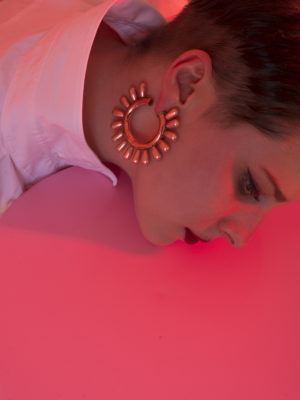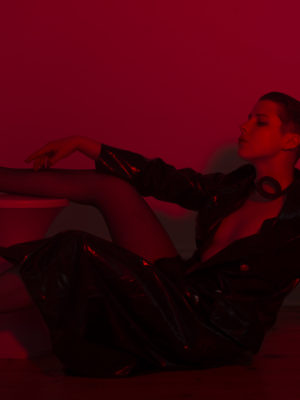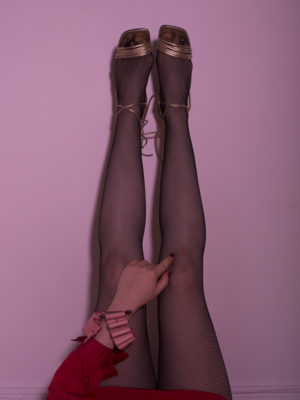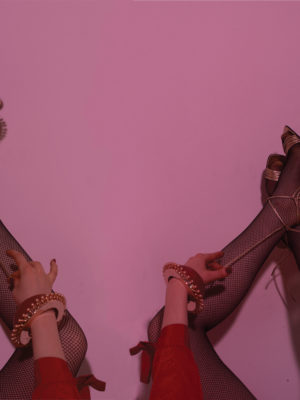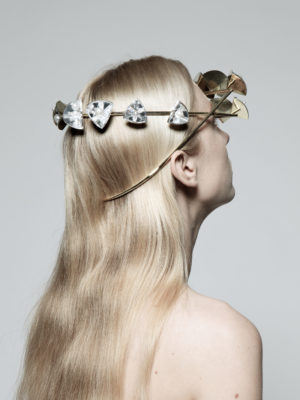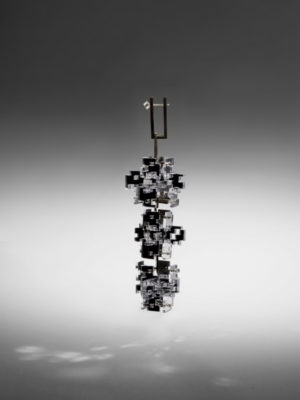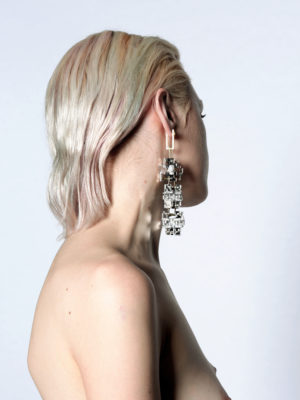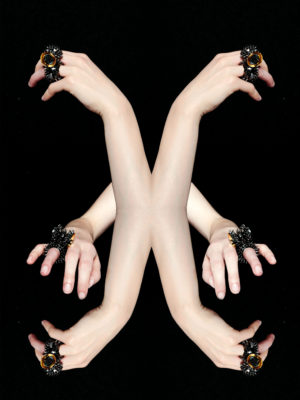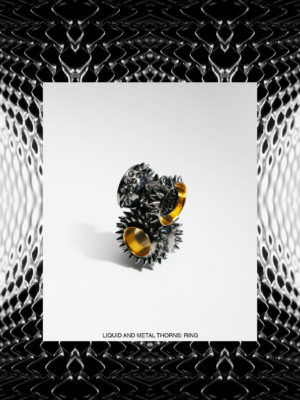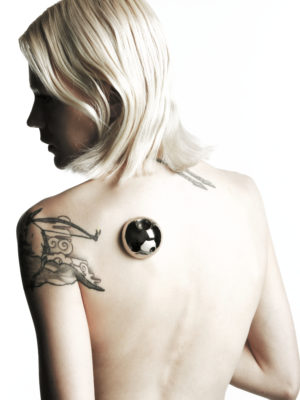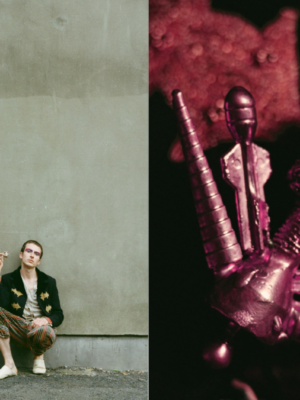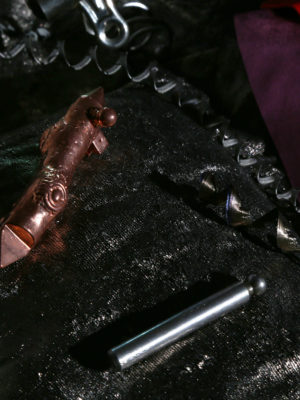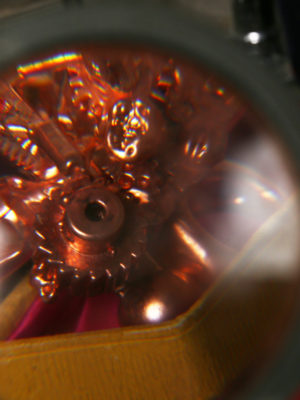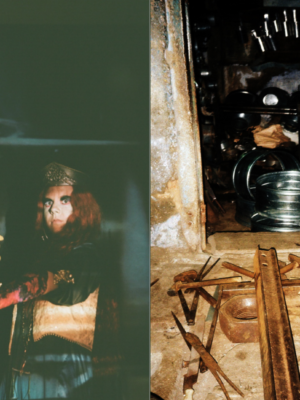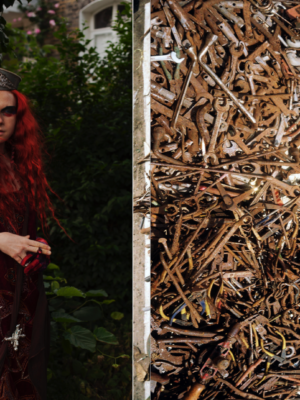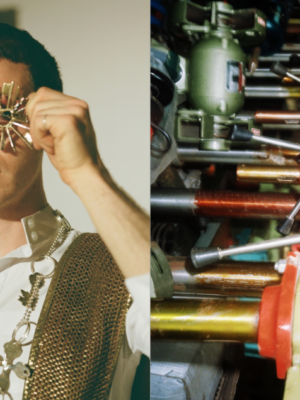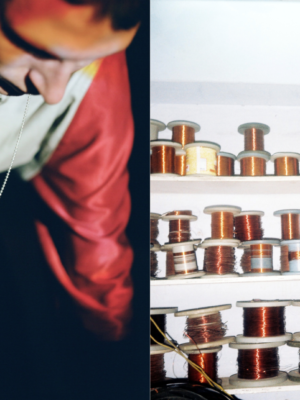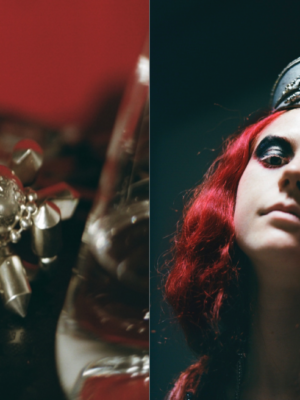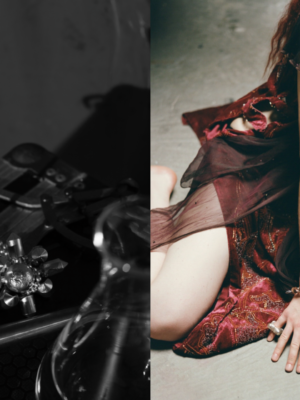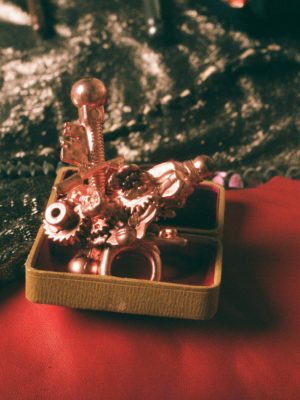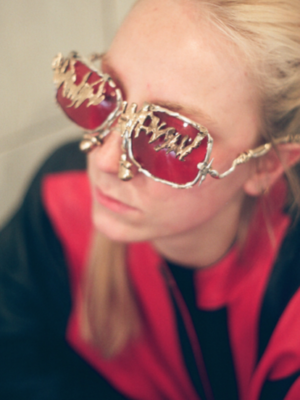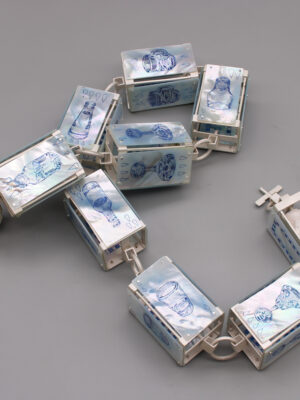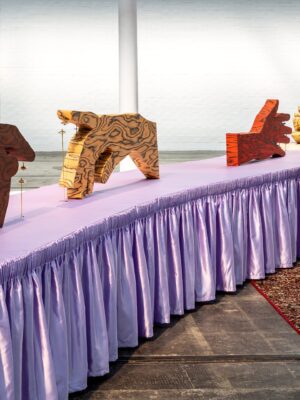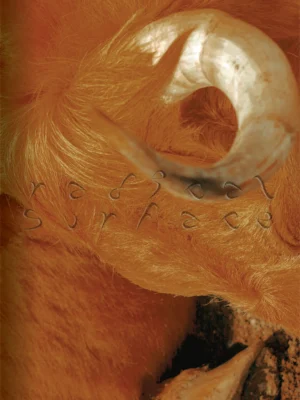Rosanna Batt
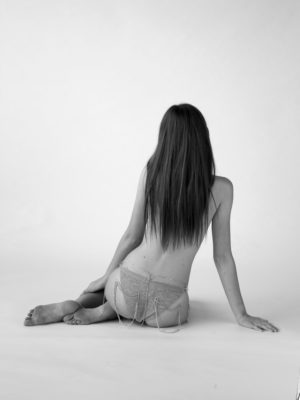
My collection works hand in hand with the body, they compliment each other just as clothing would, The wearer holds a relationship with the piece, as to put it on, they must have consideration and care whilst putting something familiar and seemingly ordinary onto the body. The idea of the pieces taking the placement of a clothes, acting as the clothes, or to sit on top of them in the position of an accessory is something I tested and achieved in my collection.
It was important my pieces were made to measure, I wanted to achieve a good fit, just as you would expect from an item of clothing. The weight of the beads is something I like, each piece has a lightness about it, having enough weight to vividly hold it’s shape, but also allowing each piece to have a mind on its own, on or off the body. I like the idea how any structure in the pieces would be impossible to if left in a corner, similar to pile of clothing slumped on a chair. The reality of making something I have created a look book to go with my collection, I think it’s important for the viewer to see the collection on and off the body, I think they both tell a story.
Elena Bonanomi

My final collection refers mostly to symbols and signs that are part of our daily life, that often we take for granted, ignoring their influence and importance.
From the etymology of the word symbol (which derives from Greek and it means throwing things together) it is easy to understand its incredible power.
A strong fascination about that drove my collection.
I especially investigated symbols used in popular and commercial jewellery and the ones widely exchanged in the digital communication.
I was especially struck by the recent Moby’s video-clip, called ‘Are you lost in the world like me’ which underlines our homogenisation and dependence to the all the aspects linked to the digital world. The super fast use of digital symbols, such emoji and others, has replaced the use of the words, now you can express a feeling in a frenetic, impersonal and straightforward way.
I wanted to de-contextualized those symbols, putting them in another world, adding value to them. That’s why I decide to use mainly precious materials, such as gold, silver and gemstones.
Another common thread is the movement and the fragmentation of a piece of jewellery.
My emoji brooches appear or disappear, my tiny rings reveal their message when they are all aligned, the depicted jewellery in chains change their shape following the wearer movement, the slices of gems can rotate and when they lye down they apparently seem just a pile of well-cut gemstones, but when worn they show their whole three-dimensional shape.
This concept broadly refers to the digital world, which is just a representation of people, of what they do and how they are. The digital reign is often characterized by appearance and falseness.
That’s why my jewellery play with the wearer’s expectation, they are in constant motion, they are mutable, they hide or show themselves.
Another kind of joke is represented by the jewellery made with chain. In fact just of representation we are talking about. Common and popular jewellery items are depicted using different colours of chain. So it’s easy to ask ‘Which one is the real jewellery?’.
My pieces are all wearable. Actually the wearer is a fundamental part of my jewellery. They make sense and become alive when worn by someone. It’s my aim to sell my jewellery in concept stores or jewellery gallery, to people that want to wear jewellery that have a concept behind an they are comfortable in the same time.
Lucy Ganley
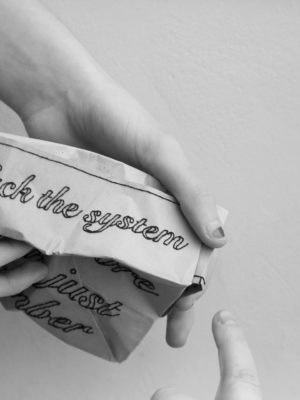
This project started by me exploring not only how we value objects but also how we value people. During my initial research I decided to take a closer look at, and concentrate on the prison system, and its treatment of inmates. The gathering of evidence and facts started with a visit to Eastern State Penitentiary located in Philadelphia USA. The prison is ‘famed’ for introducing the practice of 24hr solitary confinement, and separately, the once unique architectural design of the prison subsequently influenced prison architecture throughout the world, including London’s Pentonville prison.
After a fascinating tour of the Eastern State Penitentiary, I began to question the very nature of prison. I wanted to further explore the different aspects of a world I had no experience of, and could never really comprehend. I found reading the prisoners stories the most informative and honest – this is where my pieces take their main inspiration from.
Behaviour Modification is a technique used by the prison system to try and increase or decrease a particular type of behaviour. One of these modification techniques is to feed inmates ‘Nutra Loaf‘ – made from the blended ingredients of an entire meal which is then baked. What I found particularly interesting was how they served it, instead of a food tray you are given your meal in a brown paper bag.
This is considered by many to be a form of punishment and some states in the U.S have chosen to ban the practice in an attempt to ‘humanise’ how they treat inmates.
The words stitched into the paper are quotes found on the cell walls of Reading prison, and also from letters I received from prisoners along with drawings. These powerful words reflect a viewpoint and voice we, the ‘onlookers’, would never usually hear.
The font of the texts is also significant, for example – a number of light switches in the prison, comically had ‘room service’ written on them!
I wanted to juxtapose the two following experiences, one of being in prison and the other staying at a luxury hotel. The font was inspired by hotel branding.
These brooches are made from brown paper and can be crushed easily to highlight the asymmetric fight of a prisoner verse the prison system.
My volunteering in a prison sewing class, re-affirmed to me the projects importance of ‘communicating the prisoner’s words’.
Through the pieces I wanted to show the value in their point of view, they are the ones living each day in prison, they are experiencing it first hand. It was a collaboration with them.Through the wearing of the brooches, people show solidarity to inmates.
Francesca Davey
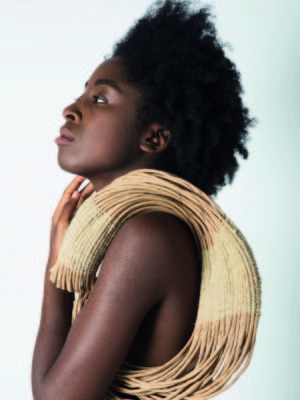
My graduate collection is inspired by a research trip I took to Sarawak (Malaysia) during my internship in the summer of 2016. During the trip I experienced living in a traditional long house with a group of indigenous Iban people. The trip allowed me to witness first hand a culture rich in traditional crafts and native knowledge. The trip was really important to myself, as my design interests lie within the implementation of traditional crafts in contemporary jewellery. My work aims to promote the importance of sustaining cultural and historical traditions of craft knowledge in a technological fast paced society.
My collection explores ways of implementing time- honoured Sarawak basketry weaving techniques in contemporary jewellery forms. I focused my research on one of the most historically recognisable woven forms, the basket. Not only a historically important design, which continues to be redesigned and produced for different uses throughout history, it has ultimately remains a vessel structure used to contain objects. Through my research I became aware that the basket presents characteristics similar to Jewellery. Basket are objects designed as a vessel structure, containing a hollow that allows an object to be placed inside. Jewellery has a similar job, it is commonly designed with hollows that allows the piece to encompass the body e.g rings, necklaces and bracelets. Just as a basket incases an object, so does Jewellery to the body.
I was inspired by the works of Sarawak weavers and fibre artists such as Dona L Anderson, Helle Jorgensen and Harriet Goodall (who all use traditional weaving materials and techniques to create their works). I have used traditional techniques and weaving materials in my collection, such as reed fibre rush and raffia, in an effort to present pieces in a relatively raw state. As I began to investigate the materials and process of weaving I soon became aware that weaving naturally informs its own interesting structural language. The process of the repetitive handwork naturally informed the curved structures of the pieces in my collection due to the tension of the weave. This meant my design process was really an investigation into the relationship between the materials and the process of weaving, which ultimately resulted in a subtle sense of balance in my collection.
Georgina Hopkin
ORGAN CAKE II
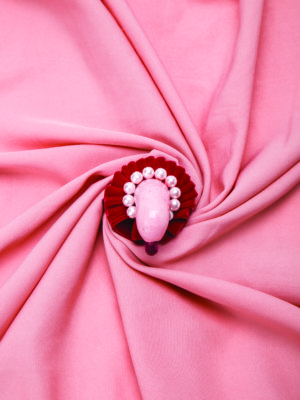
My initial inspiration came from seeing some beautiful fishy pink abstract photographs, which everyone else saw as beautiful, until it was discovered that these images were in fact close ups of internal organs. Upon learning this, people would suddenly react negatively, saying it was gross. I noticed that if you are not told what you are seeing, you develop your own opinion of it, rather than the preconceived idea that guts = gross. The jewellery I created can be interpreted in many different ways, some people would see a dripping selection of dissected organs, others would see sweet candy floss and chewing gum creations.
I wanted to design pieces of jewellery that look like extensions of the body, or like mutated body parts. Their purpose is to look like they have grown from the body, combining the grotesque bubbling, oozing foam with the sweet, sugary pink colour and crystal/pearl embellishments. I am exploring how our perception of the grotesque produced a negative reaction, and explore how these reactions can be altered by combining two different concepts that actually have a very similar aesthetic.
These pieces of jewellery create a cohesive collection because the majority of the pieces are built up of foam, as in the core shape is foam, which is then built upon. There is a recurring use of droplet shaped crystals hanging off the foam, as well as tiny bead clusters, and things being framed, whether that is with metal, velvet frill or pearls. When all the pieces are laid out together, they look like a decorated dissection; as if each piece is an internal organ that has been removed from the body and then given it’s own jewellery in the form of embellishment.
The pieces are all fairly lightweight due to the foam, yet they give the impression that they are heavy because of their bulbous shapes. I have combined hard and soft materials, some more expected than others, as well as smooth and bumpy textures. Each piece is very enticing to look at and has to be touched to be fully understood; it is this curiosity that I wanted to invoke, and draws from my research of materials being used in unexpected ways and creating unexpected textures. I like that my collection seems humorous, something quite gross and organic has been decorated, making it seem more beautiful and pleasing to look at, and therefore perhaps making them more precious?
Kristy Shing Yan Fan
“I crashed a little today”
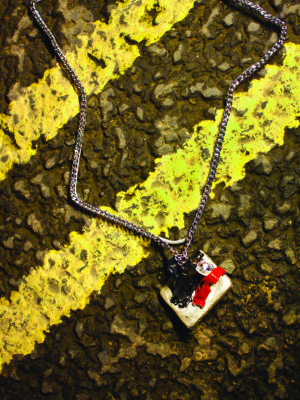
This collection began playing with memorable childhood toys and got inspired by the moment of car crashes that I dreamt of and wanting to illustrate it in the scale of toys; alien but familiar. Attempting to express one’s chaotic, post-apocalyptic mental landscape, to portray an abstract mental state, the duality we feel in relation to man-made accidents when experienced from a distance, as spectators. Contradictions also arise during the moment of crashing, physically and mentally; Apocalyptic but a little romantic, beautiful and abusive, like sharp smiles and fast cars, calm and chaotic. This is a humorous and absurdist collection, with crystal set by the toy cars themselves fixed into the pewter casting and toy cars melting. The juxtaposition of pewter with plastic, pearl and shiny crystal adds a surreal dreamlike layer to my work; as if our dreams to technologies seems like just our yesterday dream toys. Car crashes embody the literal collision between consumption and value; calling attention on man- made accidents, the product of industrialisation, while vehicles and toys being one of their products. Industrial and automobile components like webbings, chains, tyres, buckles, screws, roads and signs are referenced. Pewter is chosen as it is an industrial material, and casting is used because it is a process of mass production.
Maria Cotuna
Pink Temptation
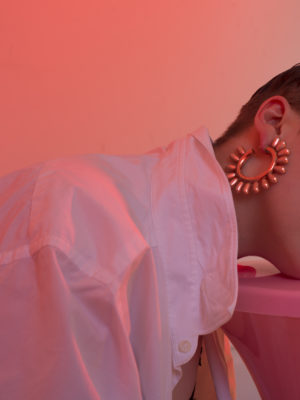
The collection of jewellery pieces I have made explore the ambiguous symbolism of power-play.
I have made a range of objects that provoke a discussion through their ambivalent nature. I have achieved this through contrasting materials and colours as well as their stereotypical meaning in culture. For example, pearls are often linked to sensuality, though they also often stand for purity and propriety. The duality of the pieces I have made, also comes from unexpected or at least contrasting associations. This is in the case of the spat, where a respectable gentleman’s item is made in rubber, a material that is often considered cheap, additionally the fishnet cut out pattern adds to the amalgamation of unusual elements.
Additionally I use the snake as a recurring symbol in my collection, because of it’s complexity. On the one hand it is used to suggest how even taboo themes can generate new beginnings, new explorations. On the other hand, more traditionally, it stands for dangerous seduction. People use sensuality, sexuality and eroticism as power plays and the collection of jewellery pieces I have made aim to neutralise or control desire.
Hau Wen Chien
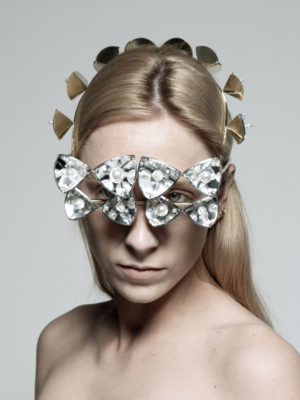
By researching and analysing the constructed elements of traditional jewellery, I found that among all the elements, the reflection of light in jewellery is very attractive to me. Compared with clothing, jewellery was among the first objects humans wore to reflect and capture the light.
Light is also very important to our visual experience and I am fascinated by optical illusions and trickery, a kind of reality and fiction between what is physically real and mentally processed – a sense of beauty caused by the error of the visual nerve.
This also relates to the modern phenomenon where real life is interlaced with a virtual life experience. With this theme as a start point I studied the 1960 optical arts such as; Gerhard von graevenitz’s K 4 303 in 1966/67, Bridget Riley’s Blaze 4 in 1964, Marina Apollonio’s Dynamische kreisbewegung 6s in 1966, Joel stein’s Neuf triedres in 1963 to find several interesting concepts. For example, the repetition and rhythm of an image, the strong geometric structure, the supernatural brought about by mirroring and visual dislocation, were all used in creating optical illusions. By applying and developing these concepts to jewellery I created my collection.
This collection, rather than highlight the values of traditional fine jewellery, status and wealth, enhance the light, reflection and illusion to achieve my communication and challenges the conventional notion of value. I play with the material, size, scale and way of wearing contemporary jewellery designs.
Colombe d'Humieres

I was at first inspired by the alchemist power, their ancient goals, aesthetic and aims they pursue. The mysticism of conception has disappeared nowadays due to mechanisation and new technologies. Therefore the alchemist dreams evaporated in a world where making anything is possible.
The jewellery workshop machines are most of the time a starting point for my inspiration. I find myself being very inspired by the mechanised environment and see in the machine the complexity, the possibilities of the world’s working. In the tools, I see the potential answers to a constant interrogation. The world is in fact ruled by algorithms, laws, science equations. In 2017, we take the mechanical world for granted, whereas the most advanced techniques feel like magic to me. But nothing is. Every mechanical gear is our legacy as a Human being part of civilisation.
I have been working with metal for its hardness, durability, instability and color, for the feel of working with the inside of the earth itself.
This jewellery collection is constructed as an educational path that a fictional character has to take. It visually represents an attempt and a wish to develop and acquire some awareness as a Human being on Earth. It is a metaphorical and symbolic visual story. All the pieces are connected with one system of screws and connectors, working along to hold everything together.
